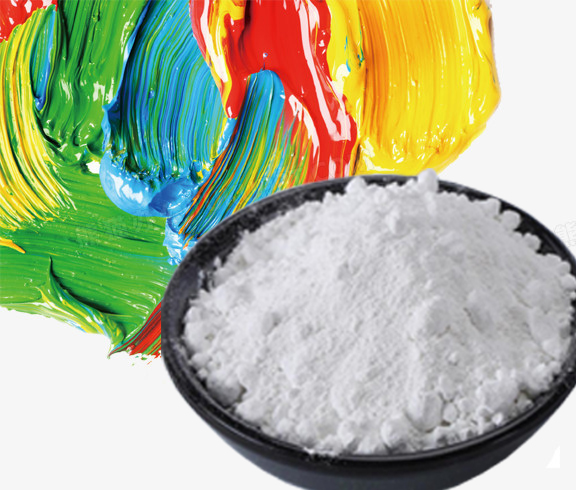
Oct . 18, 2024 19:06 Back to list
Anatase Titanium Dioxide Applications in Ink Formulations for Enhanced Performance
Utilization of Anatase Titanium Dioxide in Inks Advancements and Benefits
Anatase titanium dioxide (TiO2) has gained significant attention in the ink formulation industry due to its unique properties and versatility. This mineral compound, recognized for its excellent pigmentary properties and high photocatalytic activity, is widely used in various ink applications, including printing, packaging, and even in artistic mediums. The following article explores the advantages of incorporating anatase titanium dioxide into inks, its applications, and the innovations in this field.
Properties of Anatase TiO2 in Inks
Anatase titanium dioxide is one of the three primary crystalline forms of titanium dioxide, the others being rutile and brookite. The anatase form is particularly valued for its high refractive index, excellent UV absorptivity, and superior whiteness, making it an ideal pigment for inks. Its fine particle size allows for a smoother dispersion, leading to enhanced color development and opacity in the final printed product.
One of the remarkable characteristics of anatase TiO2 is its photocatalytic properties. When exposed to UV light, anatase can initiate photocatalytic reactions that facilitate the breakdown of organic compounds. This feature can prove beneficial in ink formulations intended for outdoor use, as it can enhance the longevity and durability of prints by providing self-cleaning effects and reducing the formation of dirt and grime on surfaces.
Applications in Various Industries
The use of anatase titanium dioxide in inks spans several sectors. In the packaging industry, for instance, it is employed in producing food-safe inks that meet strict regulatory standards while providing vibrant colors and opacity. The addition of anatase TiO2 not only contributes to the aesthetic appeal of packaging but also enhances its functional properties, including resistance to fading from UV light exposure.
anatase titanium dioxide for inks

In the field of commercial printing, anatase TiO2 is utilized to create high-quality graphics that are both visually appealing and durable. Its use in eco-friendly inks is particularly noteworthy as the demand for sustainable and environmentally friendly products continues to rise. The ability of anatase to decompose harmful substances under UV light aligns with the growing trend toward green chemistry and sustainable manufacturing processes.
Beyond commercial applications, anatase TiO2 has found its place in artistic inks as well. Artists and designers favor inks that utilize this compound for its vibrant color payoff, durability, and compatibility with various substrates. The aesthetic qualities of anatase TiO2 make it a popular choice for fine art and craft projects, where color fidelity and longevity are key concerns.
Innovations in Ink Formulation
Recent advancements in nanotechnology and materials science have paved the way for further innovations in ink formulations containing anatase titanium dioxide. Research is ongoing to refine the particle size and surface treatment of TiO2 to enhance its dispersion in inks while minimizing potential clumping. These innovations aim to improve the overall performance of inks while maintaining their eco-friendliness.
Moreover, the development of reactive, UV-curable inks that incorporate anatase TiO2 has gained traction. These inks offer rapid drying times and increased adhesion to substrates, making them ideal for high-speed printing applications. The incorporation of photocatalytic TiO2 can also help in the self-cleaning of printing equipment, reducing maintenance downtime and enhancing productivity.
Conclusion
The integration of anatase titanium dioxide into ink formulations represents a significant advancement in the printing industry, offering a multitude of benefits from enhanced color quality to durability and eco-friendliness. As manufacturers continue to innovate and refine their formulations, the role of anatase TiO2 is likely to expand, making it a crucial component in the future of ink technology. With a growing emphasis on sustainability and functional performance, the continued exploration of anatase titanium dioxide's properties will undoubtedly lead to more exciting developments in this field.
-
Essential Guide to Calcium Powder Quotes – Pricing, Quality & Global Insights
NewsNov.24,2025
-
Reliable Anatase TiO2 Pigment Quotes for Sustainable Industry Use | CQ Titanium Dioxide
NewsNov.24,2025
-
Understanding Lithopone B311 Powder Quotes – Market Insights & Applications
NewsNov.23,2025
-
Reliable 30-50nm TiO2 Powders Quotes for Advanced Industrial Use | CQTitanium
NewsNov.23,2025
-
Comprehensive Guide on Lithopone Red Pigments Quotes | Industry Insights & Pricing
NewsNov.22,2025
-
Comprehensive Insights into the Lithopone Market: Global Trends & Applications
NewsNov.22,2025
